Names
- Kombai
- Combai
- Combai Dog
- Poligar dog
- Ramanathapuram Kombai (a variant of Kombai that is grey in colour)
- Mandai war dog
- Pulicharal Kombai (a brindle color variant)
- Porru Kombai (another rare variant)
Conservation Status
CRITICALLY ENDANGERED
Origin
India
Physical Traits
- Type: Guard dog
- Weight: Male 25 – 30 kg; Female 20 – 25 kg
- Height: Male 40 – 50 cm; Female 40 – 50 cm
- Coat: Single, short coat
- Colour: Brown with black mask, the Mandai or Ramanathapuram Kombai is grey
- Litter Size: 5 – 10
- Life Span: 9 – 13 years
The Kombai. Are they extinct?
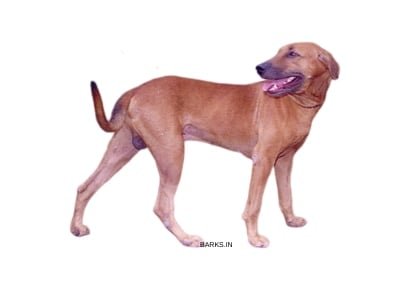
The Kombai is a critically endangered and ancient breed of dogs from the state of Tamil Nadu. Kombai’s breeding tract is in the Cumbam–Uthamapalayam villages. They are medium-sized guard dogs originally developed for guarding forts and palaces.
Kombai are one of the oldest dog breeds in existence today. In ancient times, Kombai was a war dog. There are numerous sculptures of war dogs in ancient Tamil temples. A hero stone erected during 580-630 CE in Eduthanur in Tamil Nadu has an inscription of a man and his dog called Kovivan. This dog has its jaws open, revealing its teeth. It has bat-like erect ears with a well built and muscular body. This dog closely resembles the Kombai.
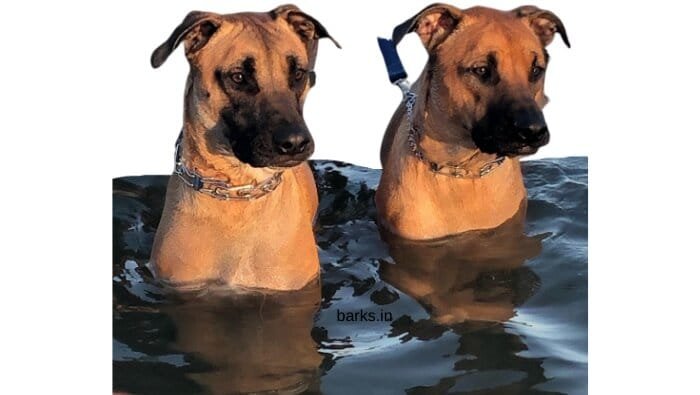
This ancient war dog faces its greatest adversary today, extinction. Despite being one of the oldest dog breeds in the world, accurate information about this dog is impossible to find. Today the internet is flooded with misinformation about the Kombai. Some even claim the Kombai to be a bear hound.
Our intent behind this article is twofold. One, publish the most accurate description of the Kombai. Two, bring to light the plight of the Kombai dog with the hope of its preservation.

In this article, we present the following about the Kombai dog.
- Kombai’s history
- Kombai dogs traits
- The dog’s purpose as intended by the ancient breeders
- Kombai’s current status
- How can you contribute towards Kombai’s rebirth
History of Kombai Dog
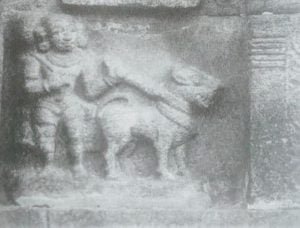
To unravel the Kombai dog, we need to go back in time, read ancient references to this dog, and interact with breeders in Kombai’s heartland. Kombai is one of the oldest dog breeds in the world. Numerous ancient sculptures in Tamil Nadu depicts soldiers with their war dogs. Kombai must be a direct descendant of these war dogs.
Many believe the Kombai dog originates from the scenic and beautiful Kombai village. However, Mr. Madhaviah Krishnan, a prominent wildlife photographer of yesteryear’s reasoned, that it is not the village that lends its name to the dog. Kombai in ancient Tamil meant fertile and low-level tract of land in the foothills of the Western Ghats. He believed the name Kombai originated as a reference to this.
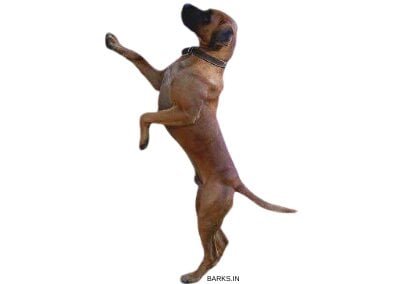
The earliest written reference that we could find about Kombai was by Colonel James Welsh in 1772. He was an officer in the British army and fought the poligar war. In his book Military Reminiscences, he recollects a fascinating story. When fighting the battle for the fort of the famous Maruthu Pandiyar brothers in Kalayar Kovil, the British encountered the fierce Kombai dogs. These dogs were guarding the fort so fiercely he recollects the British had no choice but to put down these loyal dogs before entering the fort.

Another early published work to talk about Kombai was by author and historian James Henry Nelson. In his book, Madhura Country (1868), he records the characteristics of the Kombai dog. He describes the Kombai as loyal and courageous and also narrates their value in ancient society. He writes that local rulers exchanged horses for these dogs.
We have spent countless hours going through old books, talking to breeders and experts to unravel the Kombai breed. It is fascinating to roll back the clock and peek into the past to understand these magnificent dogs.
The Pulichral Kombai
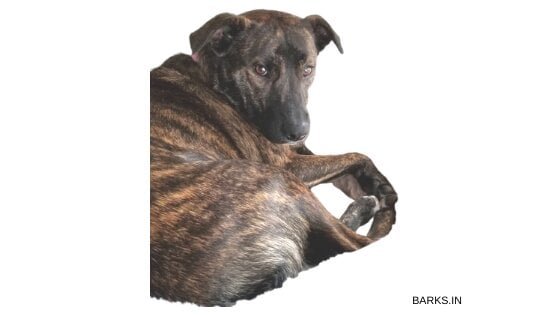
Pulicharal Kombai is an extremely rare and a beautiful Kombai variant. Puli in Tamil means tiger, and Charal means raindrops. The name means Tiger stripes like that of rain droplets. This name is a reference to this dog’s coat marking which, is brindle. People also say it is a reference to the dog’s bold character, like that of a tiger.
Finding a Kombai is hard; finding this dog, the Pulicharal Kombai, is nearly impossible. There are only a few dogs that remain.
The Porru or Porr Kombai
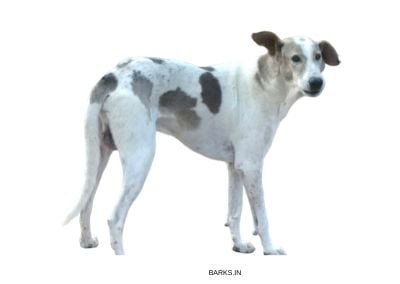
The Mandai War Dog AKA Ramanathapuram Kombai
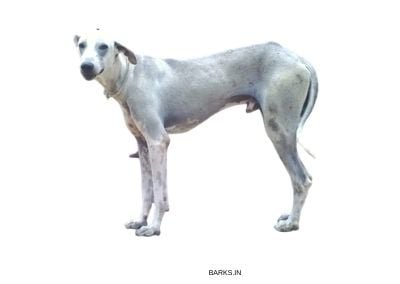
The Mandai war dog is a variant of the Kombai dog from the Ramanathapuram. Mandai dog is primarily grey in color, while other color variants also exist. There are very few written records about these dogs. Today, all that we know of this dog is, they originated in Ramanathapuram district. They were slightly larger than the Kombai dog.
In our many visits to Ramanathapuram, we were unable to locate this dog. There are dog handlers in Ramnad today, who claim to own the Mandai war dog. However, we were disappointed to see no relationship between the Kombai and their dogs.
The famous Maruthu Pandiyar was believed to have owned a number of these dogs. The only records about these dogs are sculptures found in ancient temples. Like most southern dog breeds on one truly knows them. One can safely assume that this war dog is now extinct.
Is Kombai a direct descendant of the wild dog?

The Kombai dog and the wild dog (Dhole) have common traits. Both dogs are brown in color and are of the same size and build. The Pariah dog, which is another ancient dog, also has similar traits. The Kombai and Pariah likely have a common ancestor, the Dhole. Lack of scientific studies to determine the origins of Kombai means the ancestry of the Kombai dog is yet to be scientifically proven.
The purpose of the Kombai breed
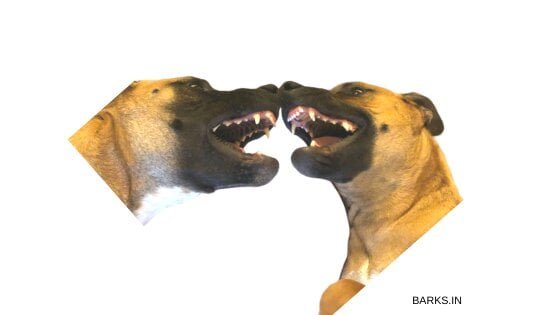
The ancient Kombai dog served a dual purpose. First, it was a guardian of forts and palaces. Second, it was a war dog, boldly following their masters to war. The modern Kombai dog is a guard dog bred to protect homes, farms, and rice fields.
Desmond Morris, in his book Dogs The ultimate dictionary of over 1,000 breeds writes, Kombai’s are powerful, athletic, and owned by Zamindars for protection. He goes on to observe that even in the 1960s, these dogs were on the verge of extinction.
A dog that is capable of guarding forts and palaces had to be ferocious. It is interesting to note, Rajapalayam dog, Chippiparai Dog, and Kanni Dog also originate from the neighboring towns and villages. Yet, each one of these dogs had a distinct purpose. Kombai was the royal guard., the Rajapalayams was the guardian of fields, Kanni was the hunter.
In our research, we haven’t come across a dog that has such a fearsome reputation as the Kombai. Hence, we urge our readers to choose their dogs wisely. Kombai dogs are guardians of palaces and not apartments. They are independent and have a never say never attitude.
The plight of Combai today

The Kombai dog once famously guarded the forts of the Marudhu Pandiya brothers. These dogs bravely fought the British for freedom. Today like all native dogs, these dogs are on the verge of extinction. Many believe the ancient Kombai might already be extinct.
Misinformation, lack of interest, non-recognition from kennel clubs are some of the factors that are pushing the remaining few dogs to extinction. Everyone today wants a Labrador or a German Shepherd.
Saving the Kombai is possible if people can muster their will. Choose a native dog over non-native breeds. Dogs from the south can tolerate hot and humid conditions. They have an excellent immune system. The total cost of ownership is significantly lower.
Physical traits of the Kombai

Kombai breed standards
Our goal in providing a breed standard is to give our readers a piece of precise information about the Kombai dog. A standard acts as a guide for people who wish to maintain and to improve their dogs.
General appearance of the Kombai dog
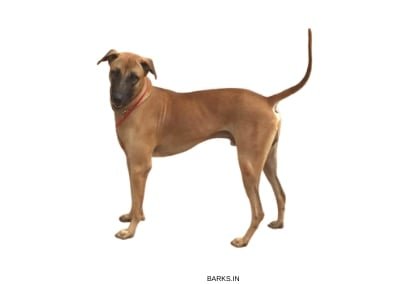
The Kombai is a medium-sized, short-coated, and solidly built dog. The dog should be both powerful, athletic, and an alert expression. This dog is a formidable guard dog, and its appearance should reflect this trait.
Head of the Kombai

The head of the Kombai is unique and an essential aspect of this breed. It is large and broad. When viewed from the front, it should appear like a blunt wedge. The head should blend with the rest of the body and is proportional.
The head of the Kombai dog should be medium length. The forehead should be flat with no loose skin. The muzzle is medium-sized and is black. This dog has triangular ears that are set high on its head. The dog should have oval and dark eyes.
Coat and color of the Kombai
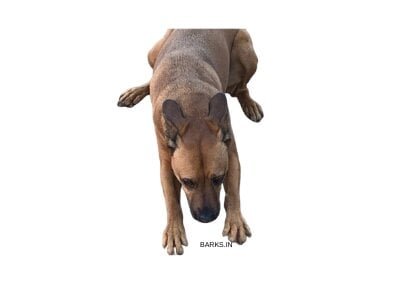
The Kombai comes in one primary color, brown. There are two rare Kombai dogs. The Pulicharal Kombai which is brindle, and the Porru Kombai dog which is piebald.
The muzzle of the dog is black. They come in single-dense-coat that is uniform and not patchy. The hair on the tail should be smooth.
Body of the Kombai
The chest of the Kombai is broad and deep. The width and depth of the chest should be of the same size. The back is strong with well-defined muscles. The body is slightly longer than tall.
It is important to note that the true Kombai has a well-defined proportional size. It is never too big or small.
Legs of the Kombai

The legs of the Kombai should symbolize their agility and strength. The muscles in the front and hind legs should be well-defined. This dog is never too thin or bulky. The feet are round and blend well into their shoulders and thighs.
Kombai dogs resemble the Rhodesian Ridgeback, a dog from South Africa. Ridgeback is also a guard dog. However, there is no scientific research to prove this theory. Like the Ridgeback, Kombai also has a small ridge of hair running along its back and is not as noticeable as the Ridgeback’s ridge.
The Bite force of the Kombai dog
They have a round head with powerful jaws. Kombai bites down with extreme force and is capable of breaking bones. There are no official estimates of this dogs bite force. Based on our experience with these dogs we anticipate it to be similar to a Pit Bull Terrier about 135 kgs.
Temperament of the Kombai
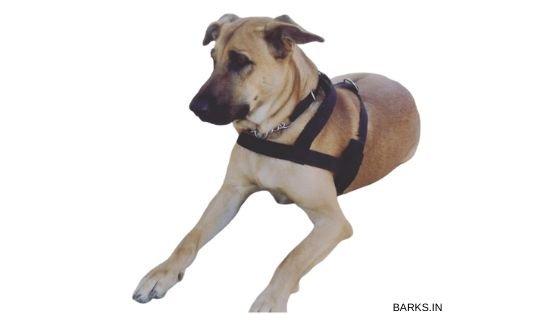
Kombai dogs are bold, courageous, and aloof. They don’t yield easily and are known for their never give up attitude. Even in puppies, this trait becomes very evident. People mistake this for aggression. A guard dog that guards forts and palaces has to have these traits.
A Kombai on guard is always ready to take on any intruder without fear. This dog will stand its ground and defend its territory fiercely. These are one of the best guard dogs available in the world. Kombai dogs are extremely territorial and are aggressive towards unfamiliar dogs/pets/humans.
We don’t recommend Kombai as your first dog. These dogs require experienced handlers to manage them. They are capable of overpowering an adult human. These dogs also don’t give up. We have heard stories of Kombai dogs holding intruders in one place for more than 12 hours until their master’s orders.
Aggression in Kombai dogs

Kombai dog is a fierce guard dog. These dogs were guardians of forts and palaces. The Kombai dog was also a war dog. Kombai’s aggression stems from these characters. These dogs had to be independent, courageous, and territorial. Generations of selective breeding for these traits gave the Kombai, an aggressive outlook.
People mistake these traits and incorrectly assume these dogs as rogues. In reality, the Kombai is intelligent, loyal, and will willingly lay down its life for its master.
How to care for a Kombai dog?
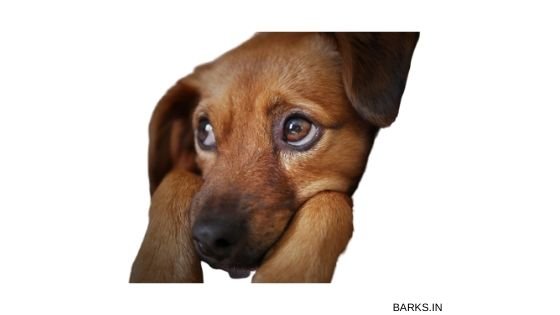
Like all native dogs, the Kombai dog is very healthy. Kombai can tolerate hot and humid conditions. They do well with little need for medical care. The only issue people report is aggression. First-time owners make the mistake of buying these powerhouses and find these dogs unmanageable.
Rabies is a real threat to dogs. Kombai needs to be vaccinated for rabies yearly. Parvovirus affects dogs less than a year old. Parov and anti-rabies vaccines are of paramount importance for dogs.
Grooming

Kombai dogs have short coats. Their coat is dense and needs very little grooming. Brushing once a week with a soft brush ensures a good coat condition. Kombai breeders use coconut oil to treat itchy skin. Coconut oil is anti-inflammatory and reduces itchiness.
Exercise Requirements

Kombai dogs require regular exercise. Unlike Rajapalayam or Kanni, which require high-intensity workouts, the Kombai does well with a long walk or two. Kombai loves playing tug, this, strengthens their jaw and also helps them to expel unnecessary aggression. These dogs enjoy pulling clothes off clothing lines. If you are drying your clothes, ensure that these guys cannot reach them.
Trainability
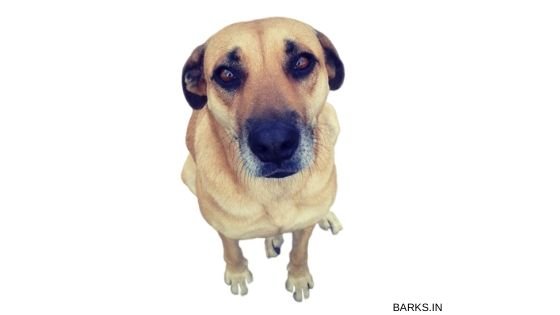
Kombai are eager learners. They are intelligent and are known to master many commands. Training a Kombai dog requires patience, as they are easily distracted. Ensure that the training sessions are short, long sessions will frustrate these dogs.
Kombai are dominant by nature. Training encourages them to find their place in the human pack. An untrained, isolated Kombai assumes the pack leadership, which can result in aggression. Do not choose a Kombai if you cannot spend time training them.
Kombai are extremely territorial dogs. A Kombai will stand its ground and defend its territory till the end. Early socialization helps them to distinguish friends from foe. Kombai is a powerhouse and can easily drag an average adult around. We recommend leash training to prevent leash pulling.
Kombai has a natural guarding instinct. We recommend you learn to harness this instinct as a means of positive reinforcement. This method of training helps the Kombai to learn quickly. This method also increases the bond between the dog and its master.
Recommended Reading: Understanding dog’s body language
Nutritional needs of Kombai
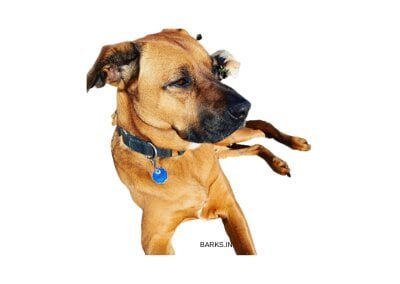
Kombai dogs thrive in homemade food. Kombai requires balanced nutrition. Their muscular body needs food that has high protein content. Kombai is susceptible to obesity, hence overfeeding should be avoided. Feeding meaty bones helps Kombai puppies dental health and prevents chewing furniture and shoes.
Recommended Reading: Which human foods are good and which ones to avoid
Adaptability of Kombai

Kombai can live in an apartment provided their masters, have considerable experience in managing aggressive dog breeds. The trouble with these dogs living in an apartment is they don’t get along with strangers. Kombai thrives in hot and humid conditions. They require special care when the temperatures go below 20C. Their short coats do not keep them warm during cold winter nights.
Top known ailments (health issues)

As a result of sound breeding practice, the Kombai dog is a very healthy dog with very few ailments.
- Obesity: Overfed Kombai dogs are prone to obesity issues.
- Parvo viral diarrhea: Deadly disease affecting dogs younger than one year, often resulting in death.
- Dermatitis: Dermatitis causes the dog to lose its hair. As a result, it causes skin irritation and itching.
Recommended Reading: Natural remedies for dogs
How much does Kombai dog cost?
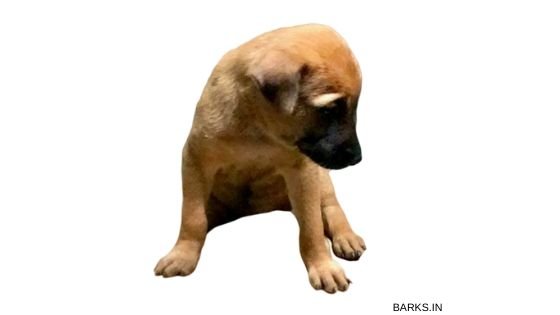
| Puppy cost | Avg. Food cost /month | The total cost/year |
| ₹7,000 to ₹15,500 | ₹2,700 to ₹4,200 | ₹5,500 to ₹12,700 |
The price of the Kombai various greatly depending on where you buy the dog. The best place to find a true Kombai are the villages in Theni district. Start your search by visiting the Kennel Club’s office in your city. They will be able to give you the contact information of breeders. Kennel Club also organizes native breed specialty dog shows you should be able to meet breeders there.
The following reasons make finding a true Kombai is difficult.
- Kombai are rare, even in the native breeding tract, finding the true Kombai is a difficult task.
- Breed standards for the Kombai do not exist.
- Misinformation about the dog makes identification of Kombai difficult.
Recommended Reading: Dog prices in India
When to choose a Kombai dog?
Kombai is an ancient war dog. It was responsible for guarding forts and palaces. Today they are household guards. They are best suited for guarding large fenced properties. Don’t get a Kombai if you don’t have prior experience with large dogs.
Interesting Facts about the Kombai dog
- Kombai gets its name from the Kombai village.
- The Mandai dog was used against the British by the fabled Marudhu Pandiyar brothers.
- Introduction non-native breeds of dogs, improper management are pushing Kombai towards extinction.
- The Kennel Club of India has introduced specialty native breed dog shows to promote native dogs like the Kombai.
Frequently asked questions about Kombai dog
How to identify the original Kombai?
Kombai dog is a medium-sized guard dog. Kombai is brown in color with a black mask and is muscular. They have golden eyes. Like the Rhodesian Ridgeback, Kombai has a ridge of hair on the back running in the opposite direction.
Kombai dogs are rare, even in their native breeding tract. There are no known breed standards available, which makes identifying the original Kombai difficult.
True Kombai is a dominant dog. Picking up a puppy and rolling it on its back should result in the puppy fighting back. People also make loud noises and set off firecrackers to see the pup’s reaction. Original Kombai is not intimidated by loud noises.
Where to buy a Kombai dog?
The best place to buy a Kombai dog is to visit its native breeding tract in the Theni district. DogsIndia.com has a list of breeders and their contact information. Start your search by visiting the Kennel Club’s office in your city. They will be able to give you the contact information of breeders. The Kennel Club also organizes native breed specialty dog shows you should be able to meet breeders there.
How can I help save the Kombai?
There are many things that one can do to save these dogs.
- Join the Kombai revival foundation project in facebook
- Spread the word about these dogs through social media. Bring to light the plight of the Kombai dog.
- Choose Kombai dog if you are looking for a guard dog. They are better suited to hot and humid conditions than a non-native breed.
- If you decide to buy a Kombai, buy it from its native breeding tract.
Conclusion

In conclusion, Kombai, the fabled war dog that fought the invading British army, is slowly eroding. These remarkable dogs are losing their place to exotic modern dogs. A true Kombai has no or equal. They are loyal, with a never back down spirit. It is sad to see this dog gradually disappear. We urge our readers to share the plight of these dogs in social media, let us increase awareness and change people’s minds.


Excellent!
Its very clear now.
Excellent, informative write up on theKombai dog. Thanks.
Hi Robert.
My name is Sada and I have adopted two Kombai lineage (not pure bloodline) from a tribal hunters pack that left their female dog around our village.
I have a YouTube channel named ‘Kombai Lover’
So many people are asking me the places where they can get a pure Kombai and I keep telling them to visit kennels/breeders around Madurai.
I’m from Andhra and I’ve never visited those kennels. I’ve searched so many pet shops around our town but disappointed to know that they aren’t even aware of this breed.
For this day, I clearly don’t know if my buddies are Kombai lineage (When I’ve adopted them, our friends asked me the breed name and I’ve posted the pictures of my puppies in some Indian pets discussion pages on Facebook and most of them replied Kombai. So then I’ve tried searching for it on the internet and magically all the behaviours matches exactly with our buddies except for a small white patch on the black muzzle).
Can you please check out my videos on the YouTube channel (Kombai Lover) and confirm if my buddies are related to this breed and also let me know if you have any legit Kombai breeders contact numbers.
P.S: I don’t sell my puppies or make money out of this. I just want to promote this breed so that the people who don’t know about these breeds will buy/adopt and stop these from extinction.
You can contact me on sada52@live.com or 9052893838.
I’d love to have a discussion on this breed with you.
Thanks for the article.
Hi Sada,
It is a great thing that you are doing. Kombai today is on the verge of extinction and anything that we can do to help popularize this dog will go a long way in its preservation. I briefly looked at your Youtube channel, if you can send me URL of a good video (2mins) of your Kombai dogs, close ups, with your permission I can add it to my page.
Pure Kombai is red in color but have a silvery texture and with a black mask. Kombai is not known to exist in other colors.
Thanks
Robert
Sorry Robert.
It took me a while to reopen your website.
Checkout this folder for a close up video of my buddies.
https://drive.google.com/folderview?id=1MBwi_Vjk4533ZMA675qcCX41J9U6U5tD
1. Brian Buddy (Who is more of a Kombai, meeting all the traits of a Kombai and a perfect copy to my deceased first pet)
2. Lyca (Mom and my second pet)
3. Oscar (With a minimal traits of Kombai, shyness, listen to us even though he is uncomfortable whereas the other two won’t listen if they don’t like it and size is huge which makes his body looks a little tender)
Save that link.
I’ll be saving some videos which I might or might not upload on YouTube.
Hi Sada,
Your dogs look amazing. Can I post some of the pictures and videos here at barks.in?
Yep.
You can use them.
All we need is to revive this magnificent breed.
Where can i find the pulicharal kombai? Do you know any breeders
Hi Selvam,
It is very difficult to find Pulicharal dogs. The best place to start is visit a native Indian dog show and get contacts. There are people on the internet who claim to own Pulicharals I am not sure if those dogs are originals of the breed.
Thanks
Robert
Pulicharal Kombai, is this a Kombai. Never heard of it before
Hi,
Thanks for reading our post. Yes, Pulicharal is a very rare Kombai, sadly not many exists
Thanks
Robert
Hi Martin,
It is difficult to find original Kombai. Please search through Kombai Facebook forums. I don’t know about any breeders of Kombai.
Hi Jawad,
Thanks for your comment and reading our post. The Ramanathapuram Kombai is an ancient war dog. The remoteness of some of our villages probably ensured that some of these dogs survive even until now. I have not personally encountered this dog during my visits to Ramnad. Many people write to me and say the same, the description of their dog matches our research. I am sure that this dog still lingers in the fringes of our society.
It is nice to see people like you, who are after the well being of our native dogs. I will trust the knowledge of the local villagers more than mine. If someone who has bred this dog for years says its a Kombai, the chances are what you have is probably a piece of our ancient history.
Thanks
Robert
Hello Sir,
Thank you for reading our post. You are right, sadly Kombais are almost extinct. It is painful to see our native dogs slowly disappearing. I am truly grateful for people like you who wish to do their part in protecting these dogs. Thank you.
The best way to find a true Kombai is through the Facebook group, Kombai revival foundation (https://www.facebook.com/pages/category/Community-Service/The-Tamil-Nadu-Kombai-Dog-Revival-Foundation-191871148081602/). Please join this group, you should be able to meet dog lovers such as yourself and hopefully find a Kombai pair that you are looking for. You can also try http://www.dogsindia.com/combai.htm.
Hope this helps.
Thanks
Robert
i need a kombai dangerous dog brees in the world
Hi Somesh,
Thanks for reading our post. You are right Kombai is a dangerous dog breed. Sadly, the pure Kombai is most likely extinct or only very few remain. We don’t know of any breeder who have this dog. Please check facebook postings and dogsindia.com to find one.
Thanks
Hi Anubrata,
Thanks for reading our post and the kind words, more importantly your interest towards this beautiful dog. We want to get an accurate picture of the true Kombai out. Unfortunately reliable and factual information about this dog is hard to find. Our post still needs a lot of work and does not do justice to this dog. We are constantly working towards getting factual information. Your words are a great encouragement.
Thanks
Hi sir I also like Indian dog breed… But I have a kombai like dog . I am not confirm it is kombai or not but create many problems biting everything class sleeper shoes.
Hi,
All puppies are like that, when they grow. They like to chew and bite on things. Take your puppy for a walk, play with him and make him tired.